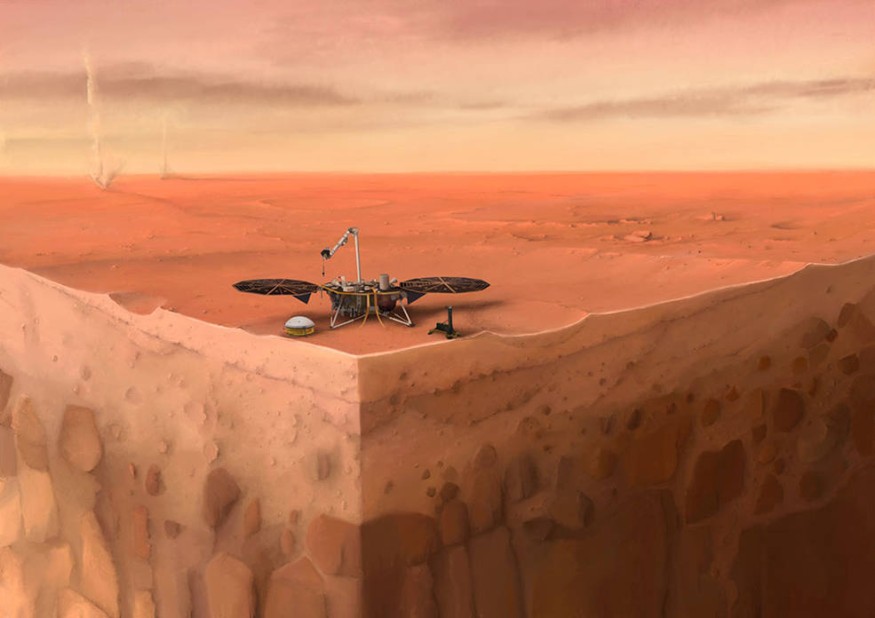After the InSight Mars lander's power supply fell below the threshold, NASA will give an update regarding one of its Red Planet projects this week.
On Tuesday, May 17 at 2 p.m. EDT, the agency will provide reporters with an update on the spacecraft. Those who want to listen may check it on the NASA website.
Due to accumulating dust on its dual solar panels, InSight has been on a power diet. In 2021, engineers could remove some dust from a single panel by pouring sand on it, but no lucky dust devil has appeared to clean everything up.

In this artist's concept of NASA's InSight lander on Mars, layers of the planet's subsurface can be seen below, and dust devils can be seen in the background.
NASA InSight Lander Struggles From Mars Dust
Space.com said InSight, a solar-powered lander, is battling massive dust accumulation detected from the cosmos. The red color was visible in a high-resolution photograph from NASA's Mars Reconnaissance Orbiter on April 9.
The Mars lander had to go into safe mode earlier this year owing to dust coating the panels.
In February, the agency predicted that electricity would be restored by the middle of the year.
NASA said the solar panels of the InSight lander produce almost as much power as before the January storm. "That power level should enable the lander to continue science operations into the summer," the update said.
Even last year, NASA warned that InSight's operations might be cut short this year due to a lack of electricity. The Red Planet's natural orbital cycle also brings it closest to the sun in 2021, which means less solar radiation reaches the surface. Dust is also increasing as the seasons change.
InSight, on the other hand, has already beyond its primary mission, which was supposed to spend a year on Mars (687 Earth days). The mission was extended because of its continuous contributions to demonstrating inner activity on Mars, which has ramifications for scientists' knowledge of Earth and other stony planets.
How Dust Storms Affect NASA InSight Lander
Dust storms are causing problems for InSight's seismometers, making it difficult to detect minor marsquakes. Shortly after the quake was reported, InSight switched into safe mode.
Inverse said the InSight team intends to use the SEIS sensor for a shorter period in the future because of the deposition of dust on the panels and the reduced quantity of solar radiation reaching the surface.
While Mars determines the exact time, Panning observes that the accumulation of dust will soon reach a point where it will be unable to use its scientific equipment unless something happens to blow the dust off the panels, which happened to the earlier rovers Spirit and Opportunity.
The lander will thereafter enter an extremely low-power mode. However, while waiting for the solar panels to clear, the crew will continue to listen for it to speak.
However, just as InSight was ready to "walk out into the Martian sunset," the planet gave it an explosive sendoff.
RELATED ARTICLE : NASA Ingenuity Helicopter Captures Bizarre Image of Conical Spacecraft Wreckage That Remained Intact Despite Mars' Stressful Atmosphere
Check out more news and information on Space in Science Times.










